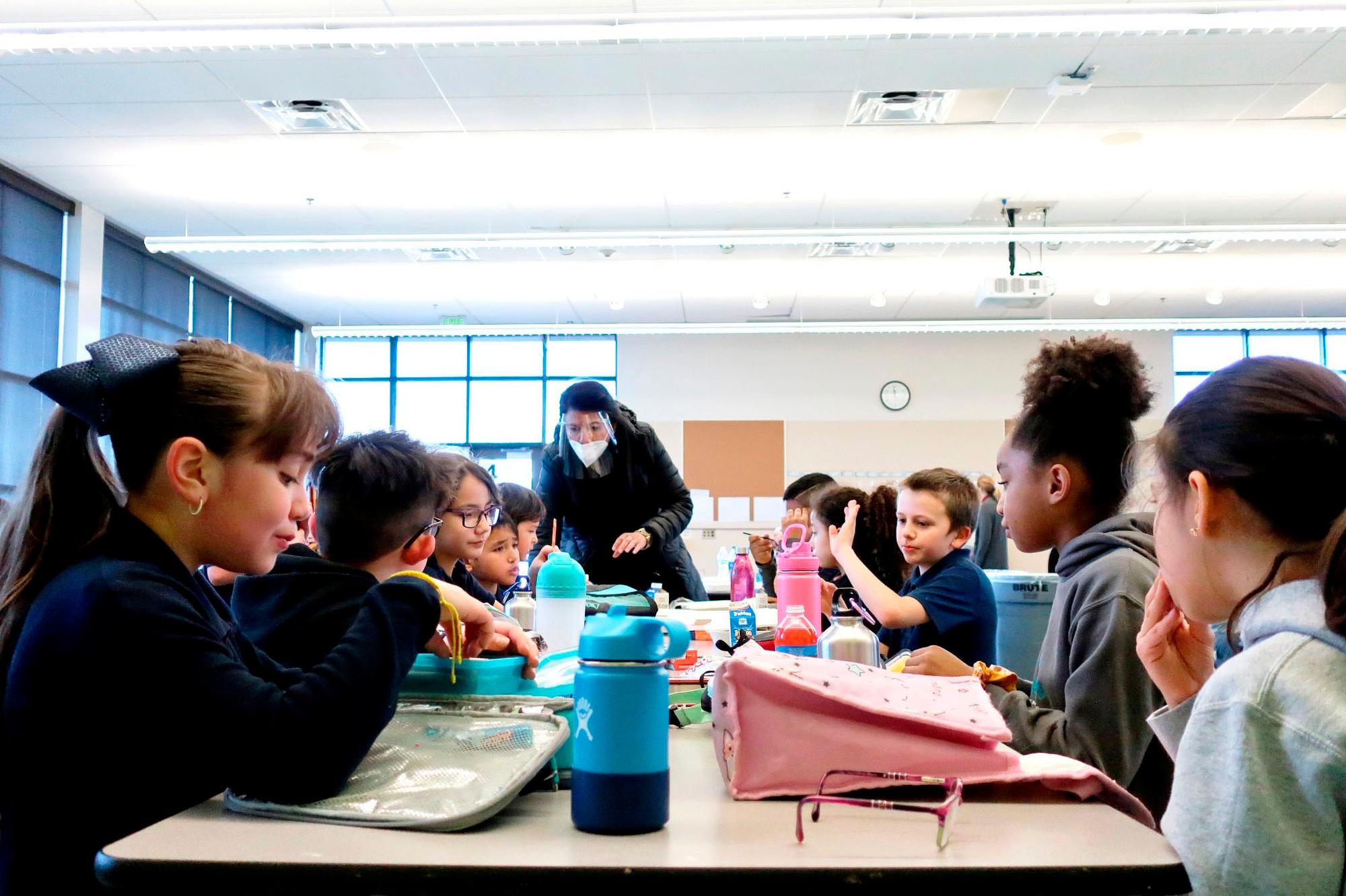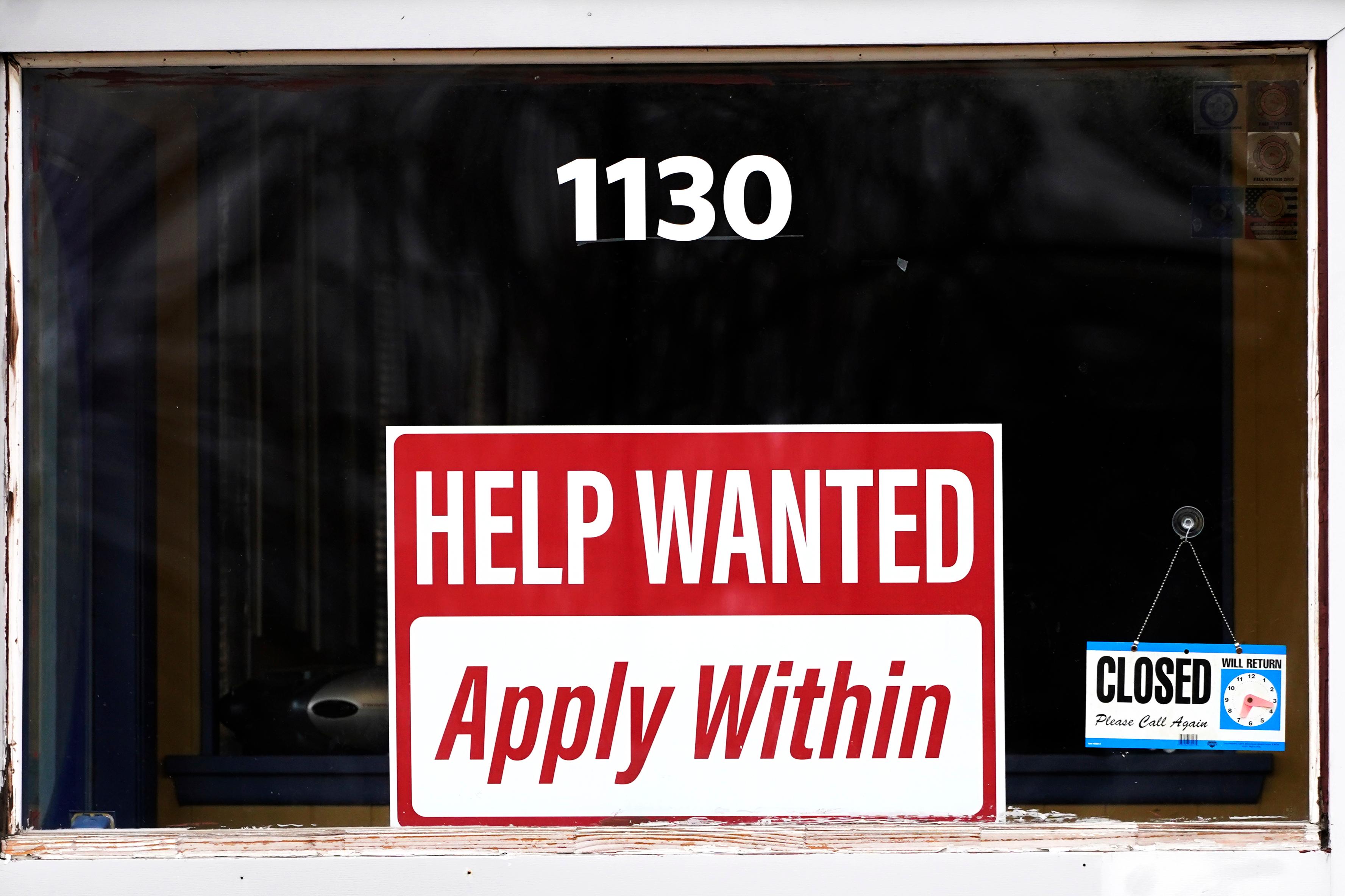
If you are a parent, you probably are getting quite a few robocalls right now. It’s your school district calling, and they want you to fill out an application for free and reduced-price lunch for your child, even if you already know you don’t qualify.
The reason, school districts say, is that a lot of state and federal dollars are tied to the counts. Simply put, if you don’t fill the forms out, it’s harder for officials to know how much money to give your district.
This year in particular, schools are on pins and needles if parents will comply. That’s because the federal government has already committed to providing free meals for everyone this year because of the pandemic.
“Parents then easily think that not being charged for a meal means that all the food is free, and, 'What is the use of submitting a meal benefits application?'” said Theresa Hafner, executive director of food services at Denver Public Schools.
But there are many reasons to fill out the forms — reasons that benefit both school districts and eligible students.
Schools rely on the count of the number of eligible students from those applications (submitted by Oct. 1, the state’s official “count day”) in order to get extra state and federal money for “at-risk” children. It can mean millions of dollars for extra tutoring and classroom aides in a school.
“The more free and reduced-price meal eligible students that a school and a district have, the greater their funding,” Hafner said.
There are also a number of benefits other than subsidized meals available for students who qualify, such as reduced-cost or no charge testing (like, for the SAT and ACT tests), athletic fees, and summer day camps.
It is true that if you are a higher-income family, filling out the application won’t make a difference. But school districts don’t go down that road of picking and choosing which families should fill out the form.
There are several reasons school districts flood every family’s inbox and voicemail urging families to fill out the application.
“They do it so they catch the families who don’t think that they qualify because some families may not think that they qualify and they will,” said Ashley Wheeland, Hunger Free Colorado’s director of public policy.
DPS’s Hafner said if a family “opts out” of completing the application, districts are “left to wonder whether the guardians know they won’t qualify, or if they simply don’t know about the eligibility tool.”
There’s still another reason officials want families to fill out the forms: During the pandemic, many people’s household incomes changed and are still changing.
“At any time during the school year if your household income changes, you can the next day walk in here and apply for free and reduced benefits,” said Stephen Menyhart, director of food services at Boulder Valley School District.
Another important reason for asking everyone is “it also removes the stigma … if you ask all families to do it, it doesn’t feel so stigmatizing,” Wheeland said. Some students have experienced lunch shaming, a form of stigmatizing children who are unable to pay for school lunch.
BVSD’s Menyhart said school officials, without thinking, can unintentionally cast judgement on a child because of their parent’s or parents’ household income. Asking everyone to fill the form out removes that stigma, Menyhart said. “We’re trying to create an equalizer and reduce the stigma around free and reduced[-price] meal benefits.”
In addition, he said the state and the U.S. Department of Agriculture don’t allow districts to explicitly tell people what to do. They can point them to income tables and let them decide if they qualify for free or reduced meals. Income must be self-reported and no documentation is required. But there is some accountability too: In November and December, districts must randomly audit 3 percent of the applications, and ask parents for pay stubs and other income documentation.
Who qualifies for no-cost or reduced-cost meals?
About 40 percent of Colorado’s school children qualify for at least some help paying for school food. Among them: students who qualify as homeless, runaway, foster and/or migrant children. Students who live with a parent in a car or hotel can get free meals regardless of the family’s income. School districts can direct you to federal income charts for free and reduced-cost meal eligibility.
In general, children in households with incomes at or below 130 percent of the federal poverty level are eligible for free school meals. That’s around $34,000 a year.
Children in households with incomes between 130 to 185 percent (about $49,000) of the federal poverty level are eligible for reduced-price school meals and can be charged no more than 30 cents for breakfast and 40 cents for lunch. In Colorado, the state covers that extra cost.
- Most Colorado Students Now Attend Schools With Mask Mandates
- Unvaccinated JeffCo Students Who Want To Do After-School Activities Will Have To Start Weekly COVID Testing This Week
- Study: Food Insecurity And The Poverty Rate Rose For Colorado Children During The Pandemic
- Kids’ Performance Across Grade Levels Fell In Every Standardized Test Subject Due To COVID-19
Eligible students can also qualify for a number of benefits
Alongside districts getting extra state and federal money for “at-risk” students, there are also a number of personal benefits for students who qualify, depending upon the school district. These often include:
- Waived college application fees.
- Waived after-school program fees.
- Waived athletics fees.
- Access to specialized tutoring programs.
- Lower internet costs.
- Waived transportation fees for families to specialized bilingual schools.
- Waived fees to take the ATC, SAT and Advanced Placement exams.
- Free or reduced-price meals.
“If you have four kids in our district, you’re paying $300-400 dollars a month for lunches next year, so there’s a real tangible financial benefit if you do qualify,” said BVSD’s Menyhart.
Families who qualify for federal nutrition programs, like the Temporary Assistance for Needy Families (TANF) or the Supplemental Nutrition Assistance Program (SNAP), can get "direct certification," which means they don’t have to fill out the meal application forms in order to get benefits.
Could meals become free for all students permanently, just like text books?
Many school nutrition experts and child hunger advocates are lobbying for a congressional bill that would make school meals free for everyone permanently.
School nutrition advocates also have their eyes on another piece of congressional legislation that would expand the number of schools that could offer free meals to all students through a program called the Community Eligibility Provision (CEP). It allows the highest poverty schools and districts to serve breakfast and lunch at no cost to all enrolled students without collecting household applications.
Right now, in order to qualify for the program, at least 40 percent of students must be “directly certified." Districts can apply for the entire district, groups of schools in the district, or individual schools. The bill would lower the eligibility threshold from 40 to 25 percent and would increase the reimbursement amount for schools that participate.
Hunger Free Colorado’s Ashley Wheeland said the advantage of participating in the CEP is that it could help all families who earn just over $50,000 but who are struggling to buy food and pay bills.
“$49,000 for a family of four is not a great wage in Colorado, and there’s a lot of families beyond that amount that are struggling to cover their costs, including school meals,” Wheeland said.
Correction, 9/23/2021: An earlier version of this story incorrectly identified how schools qualify for the Community Eligibility Provision. Schools qualify by having at least 40 percent of their students "directly certified," that is identified as being eligible for free meals without filling out a household application, such as through SNAP, the monthly food benefits program.








